What is the barley yield from 1 hectare of land and what does it depend on?
Barley cultivated by humans for several millennia along with wheat. The plant is able to tolerate drought and heat up to +40°C without losing the rate of seed filling. The crop is used as fodder for cattle and in the production of beer.
Let's look at the differences between winter and spring barley, what is its yield per hectare, what factors influence plant productivity and how to increase it.
Winter and spring barley
Although winter varieties are more productive, they account for no more than 10–12% of crops. The point is that such barley it is more difficult to cultivate, it does not tolerate severe frosts, and any deviation from the norm leads to the loss of part of the harvest.
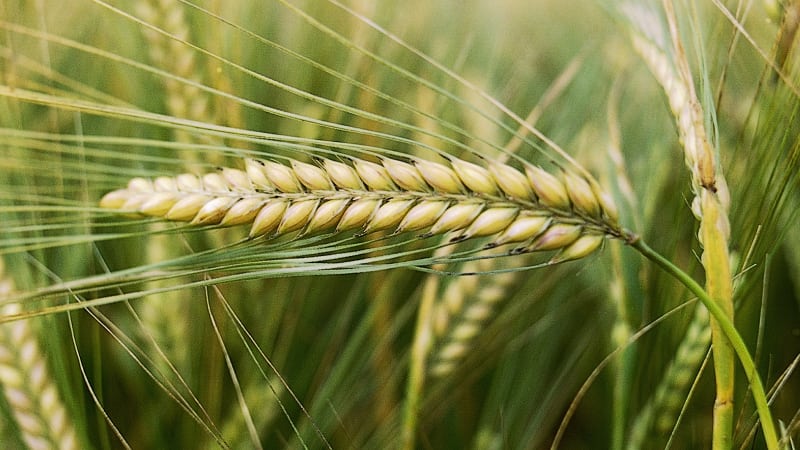 Nevertheless, it is winter barley has been in high demand lately. It ripens a little earlier than the spring crop and allows you to use the area it occupies more efficiently. The vacated territory is filled with another crop, increasing the profitability of the land. Such plants are less likely to suffer from fuses.
Nevertheless, it is winter barley has been in high demand lately. It ripens a little earlier than the spring crop and allows you to use the area it occupies more efficiently. The vacated territory is filled with another crop, increasing the profitability of the land. Such plants are less likely to suffer from fuses.
Reference! Fuses occur during drought and dry winds and manifest themselves in complete or partial infertility or stunted grain.
To reduce the risk of freezing, farmers grow spring varieties. They use moisture more economically and have a short growing season, which makes it possible to use equipment more efficiently and reduce the intensity of field work. Spring barley is used as a backup for reseeding winter crops.
Barley yield per 1 ha
Winter barley has high yield potential. It produces up to 60–70 c/ha, while the productivity of its spring “brother” is 20% lower.
How much barley can be harvested given natural soil fertility? The average statistical data is as follows: the crop yield in severely dry years is the lowest (24–36 c/ha), in wet years it is the highest (30–42 c/ha).
What does it depend on
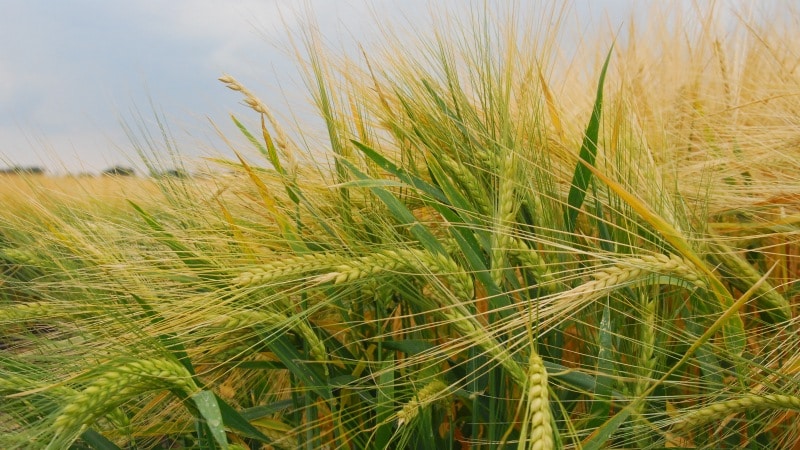
Productivity varies greatly depending on many factors. If a person cannot control the weather conditions, then the choice varieties or predecessors, it will significantly affect the future harvest.
Fertilizers
Barley is demanding on the presence of mineral fertilizers. It consumes a lot of nitrogen, phosphorus and potassium.
The effectiveness of using fertilizers when cultivating crops largely depends on precipitation. An increase in yield after the application of nitrogen fertilizers is observed in years with heavy rainfall, and in dry periods it decreases. Almost the same pattern can be observed when using phosphorus and potassium.
Climatic conditions
Favorable weather is half the success when growing any agricultural crop. Drought, heavy rains, high or low temperatures, especially during critical phases of plant growth, often lead to the death of crops.
Reference! In the countries of the European Union, the harvest depends on external conditions by 20%. In Russia this figure is extremely high - over 40%.
To reduce the harmful effects, monitoring and forecasting systems are used. In particular, the Skolkovo Innovation Center has many projects to track the relationship between weather and crop yields.Smart irrigation technologies with soil sensors are being developed: they analyze soil moisture, the movement of microelements and distribute water with liquid fertilizers. There is a project to use polymers that store moisture in the soil and then slowly release it.
Already, a small part of farmers are using predictive technology “Smart farming”, which consists of comprehensive, most optimal management of each square meter of soil.
Predecessors
Crop rotation is no less important than fertilizers or tillage.
For the full development of barley, sufficient reserves of moisture, nutrients and a weed-free field are required. Therefore, the crop is planted after rapeseed, peas, potatoes and annual grasses.
The most valuable predecessors in terms of soil moisture content are early legumes (peas), less valuable are early grain crops (spring wheat, barley, oats).
Crop care
Spring barley is sown in early spring, immediately after the snow melts and the soil dries out. This allows you to use the moisture accumulated in the soil in winter and inhibit the development of weeds.
If you are late with planting, the plants will have problems with the development of the root system, as a result, ears will form during unfavorable weather conditions and the risk of being affected by diseases and pests will increase many times over.
Important! Even with a ten-day delay in sowing, the yield will decrease by 7-8 c/ha, and in dry years - by 12 c/ha.
There are no official norms or established sowing dates. They are based on the climatic and other features of the region. The main criterion is the frost resistance of plants.
For winter varieties, the optimal sowing period is September: it is at this time that the highest level of germination is observed. The closer the planting date is to the first frost, the higher the risk that the plants will not survive the winter. This will reduce the average barley yield by tens of percent.
Caring for crops consists of harrowing the seedlings during crust formation, feeding the crops and controlling weeds.
Highly productive varieties
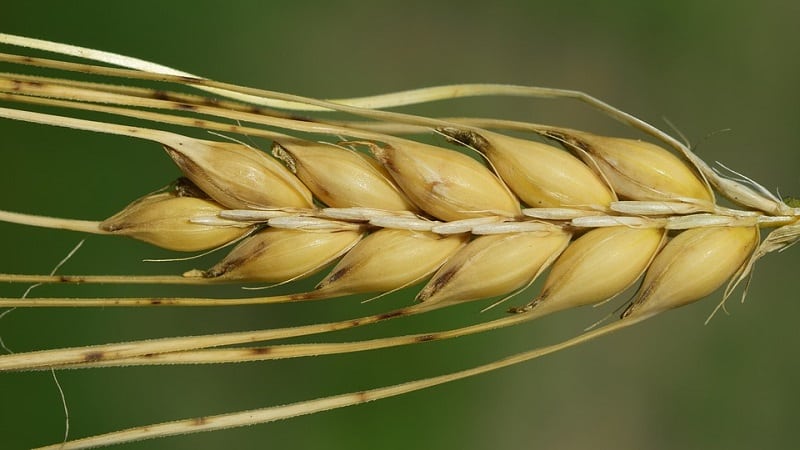
The choice of variety is one of the most important points. Seeds are carriers of the biological and economic properties of plants. Productivity largely depends on their quality.
Previously, cheap varieties were used that did not require the application of expensive fertilizers, but also produced some grain. Now the choice has expanded significantly: almost 200 varieties of barley are cultivated in Russia.
Winter barley
The most popular winter crops: Dobrynya 3, Silhouette, Rostovsky 55, Larets, Rosava, Prikumsky 85, Kozyr.
Let's look at some of them in more detail:
- Dobrynya 3 - used for fodder. Productivity reaches 102.4 c/ha. The culture is resistant to weather and climatic conditions and frost-resistant. Grows well in any type of soil. Suitable for growing in warm regions of Russia.
- Casket - gives equally high yields both during autumn and spring planting. Productivity reaches 58 c/ha. Suitable for growing in the Stavropol and Krasnodar territories, Rostov region.
- Rostovsky 55 - a variety with excellent feeding qualities. Resistant to low temperatures and droughts. Not susceptible to powdery mildew and dwarf rust. Productivity - 40–50 c/ha. Suitable for the North Caucasus region.
- Prikumsky 85 - mid-season, used for fodder. Resistant to frost, drought, root rot. The average yield is 30 c/ha.
Spring barley
The most popular plants are: Bios 1, Abava, Belgorodsky 100, Gonar, Gin, Zazersky 85, Erofey, Veresk, Idol, Moskovsky 86, Suzdalets, Sonet and others.
- Gin — the growing season lasts 70–85 days. The variety is grown mainly for brewing due to the high quality of the malt obtained from it. Groats cooks well, has excellent consistency and taste. The crop is high-yielding: it produces up to 90 c/ha.
- Bios 1 — grain contains up to 15% protein. Productivity - from 29 to 47 c/ha. The variety is suitable for brewing and food purposes. Resistant to many diseases.
- Gonar - yields up to 53 quintals of grain. It acclimatizes well in new conditions, so it is grown in almost all regions of Russia and Belarus. The variety is susceptible to smut, powdery mildew, and brown rust. It is cultivated mainly for food and fodder.
Brewing varieties
In brewing, a reduced protein content in grain is important.
The most common varieties for this industry: Gladis, Avalon, Consita, Philadelphia, Ronnie, Quench, Scarlett, Kangu, Marnie, JB Flava, Sunshine.
Sowing qualities of seeds
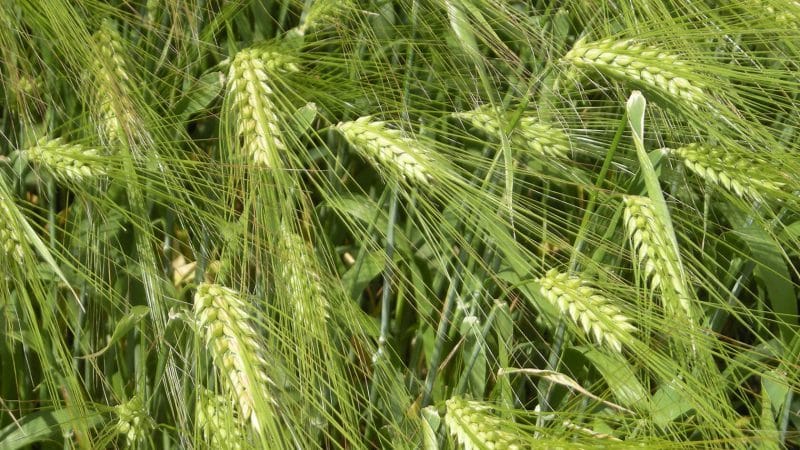
After choosing a variety, the quality of the seeds is determined:
- purity - absence of foreign impurities and defective specimens;
- germination - the ability to form normally developed seedlings;
- weight of 1,000 seeds - characterizes the weight and size of the planting material, the degree of its sorting;
- uniformity - uniformity in weight and size.
Seed moisture plays an important role in maintaining high sowing qualities: wet specimens quickly lose their germination capacity.
If you use seeds with reduced germination, increasing the seeding rate, this will lead to a decrease in grain yield per generation.The seedlings will be sparse and significantly weakened.
It is recommended to carry out exchange operations: from time to time, import seeds from other areas. Even on fertile land, without such an event, crop productivity decreases annually.
Terms and rules for harvesting the first harvest
Separate harvesting begins when the barley reaches waxy ripeness. As soon as the windrows are dry, grain threshing begins. When the crop ripens, the spike shaft easily breaks, and when it rains, the stem also breaks. For this reason, late harvesting leads to large crop losses.
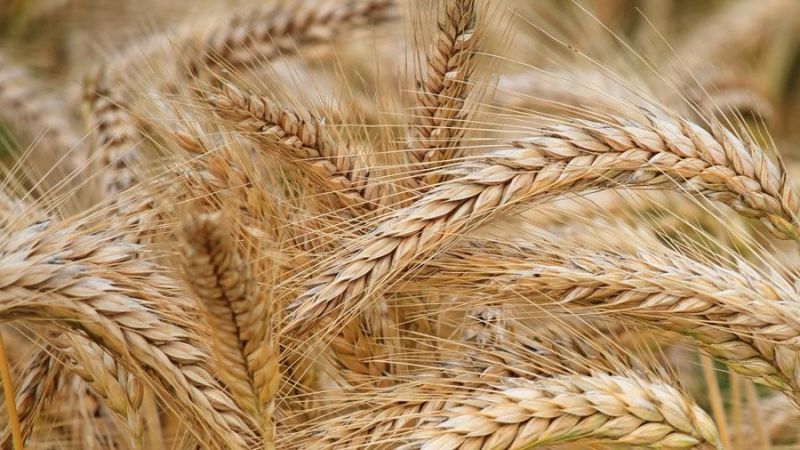
To meet the correct deadlines, pay attention to the following indicators:
- grain moisture - no higher than 18%;
- the grains must be hard, crackle when bitten, visually correspond to the standards of the variety, have a characteristic color and size, and be slightly wrinkled;
- the yellow color of the straw turns into a dirty gray color;
- the stem nodes are brown in color and hard to the touch;
- the grains are completely removed from the spikelets, but at the same time they sit so firmly that they do not fall out without outside help.
A fairly effective way to preliminary determine the maturity of barley and suitability for harvesting is the so-called “eosin test”. To do this, 20 productive stems are cut at a height of 20–30 cm from the ear and placed per day in a 1% solution of eosin (a dye obtained by the interaction of boron and fluorescein).
If within the allotted time more than half of the ears have turned pink, the optimal harvest time will occur in 7–10 days. If the stems are colored, the grain is harvested in the next 2-3 days. Even if the stems have not changed color, harvesting begins immediately.
The ears are collected in dry weather.After this, unripe seeds and other impurities are removed so that the humidity of the crop does not increase.
Conclusion
Barley is a popular crop in Russia. The productivity of winter plants is 20% higher than spring plants and reaches 70 c/ha. However, due to low frost resistance, their share in total volumes is small. To reduce the risk of freezing of crops, spring varieties are used.
The yield indicator is influenced by fertilizers, crop care, pest control, predecessors, and weather conditions. An important factor in increasing the volume of harvested grain is the correct timing of harvesting and careful threshing.